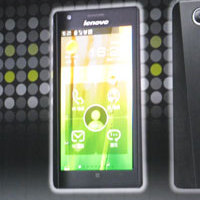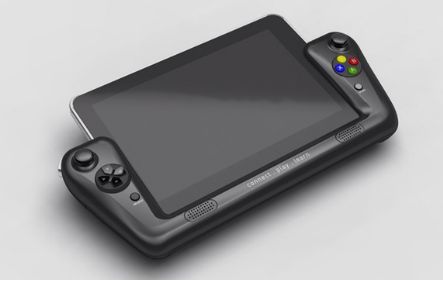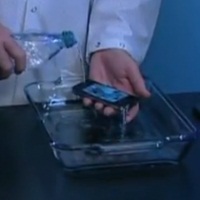Pocket Picks round-up: January 14th - Free Olympics wi-fi, first Intel phone, nano materials, 3D Android tablets
All the latest handset and app news from Pocket Gamer's sister site

This edition of the Pocket Picks round-up is a bit more app-focused than normal, which is ironic given the number of new hardware announcements at CES 2012 this week.
I felt you guys are probably sick to the teeth of hearing about the Nokia Lumia 900 or odd-looking gaming peripherals for the iPhone, so I've tried to... ahh, dammit, I can't help myself.
Here's a pretty standard Pocket Picks round-up for you, after all, then.
If you want to read up on our top picks from CES, incidentally, check out our special dedicated feature. It's good. Very good.
Lenovo K800 revealed as first Intel smartphone It's no secret that Intel has been beavering away on a mobile chip (code name 'Medfield') to rival that of CPU design firm ARM's. Up until now, though, we haven't seen the chip inside a commercial device.
It's no secret that Intel has been beavering away on a mobile chip (code name 'Medfield') to rival that of CPU design firm ARM's. Up until now, though, we haven't seen the chip inside a commercial device.
And it's likely we in the UK won't actually see one in the flesh (as it were) for a while yet, as the first phone to use the aforementioned chip - the Lenovo K800 - only seems to be destined for China. At the moment.
Still, this 1.6GHz dual-core phone with a 4.5-inch 720p display does at least exist, and the standby time being bandied around by Intel is extremely impressive - a whopping 14 days of juice on one charge.
It'll be interesting to see how these Intel phones stack up to the latest generation of ARM-powered blowers, but it looks like it'll be at least another month (at the Mobile World Congress) before we hear about a western equivalent to the K800.
WikiPad brings glasses-free 3D to Android tablets Haven't we all come to the conclusion that 3D isn't the future?
Haven't we all come to the conclusion that 3D isn't the future?
Anyway, if you're one of those people who just can't watch anything unless it has slightly more depth than usual, then you may be interested in the first glasses-free 3D Android tablet: the WikiPad.
Rather than being a fan-made wiki about writing pads, the WikiPad is an 8-inch tablet PC with a "gaming dock" that comes with its own D-pad, two joysticks, and four buttons.
It runs Ice Cream Sandwich - as you'd hope from a new Android machine - and has HDMI out for pushing the image to a big-screen TV.
We don't have the lowdown on what's powering the device at the moment, or the price it'll launch at, but we do know that the WikiPad is expected to land in the spring.
Netflix app for Android launches in UK Lovefilm finally appears to have some serious competition in the UK, thanks to the launch of Netflix this week.
Lovefilm finally appears to have some serious competition in the UK, thanks to the launch of Netflix this week.
The companion Netflix Android app is available to download now from the Android Market for free, and lets you browse through the library of film and TV shows, as well as stream content directly to your device should you subscribe to the service.
Currently, the range of titles on offer is quite limited - probably due to all the local licensing red tape that these distribution services have to cut through - but I've been reliably informed that at least 40 episodes of that rubbish Sonic cartoon are on there already. So, that's good.
The first month of your Netflix subscription is free, with subsequent months costing £5.99 for unlimited viewing. Naturally, this charge also covers using Netflix on other machines, so you can pick up where you left off on your PS3, Xbox, Wii, or PC once you get back home.
O2 to launch free wi-fi for Olympic Games in London With the Olympic Games just around the corner, UK telco O2 has announced that it has penned a deal with two London councils to provide free wi-fi for residents and for tourists to the city.
With the Olympic Games just around the corner, UK telco O2 has announced that it has penned a deal with two London councils to provide free wi-fi for residents and for tourists to the city.
It's part of a wider deal that will see England's capital flooded with free wi-fi. This is so that everyone and their mum can use their mobiles to keep track of events and pretend they really, really care about a sport at which Team GB might actually be winning. Like rowing or... errrm... No, just rowing.
Transport for London, meanwhile, still hopes to have 120 hotspots installed in Underground stations across the capital by the time the Games get underway.
Waterproof your smartphone with nano coating I've dropped at least two of my phones in water before (one died on impact, the other was saved by a speedy trip to the radiator), so I'm all too familiar with losing a phone well before its contract ends.
I've dropped at least two of my phones in water before (one died on impact, the other was saved by a speedy trip to the radiator), so I'm all too familiar with losing a phone well before its contract ends.
Liquipel thinks it's come up with a way of stopping such a fate befalling phones in the future. This is thanks to its nano coating, which waterproofs a phone both inside and out.
The company showed off the coating at CES by carefully submerging an iPhone 4S in water, then pulling it out and operating the device as normal. Well, almost as normal - the water droplets were still pressing down on the touchscreen.
However, while the procedure works well against something being submerged in a sink, the coating isn't guaranteed to work against high water pressure or impact damage.
